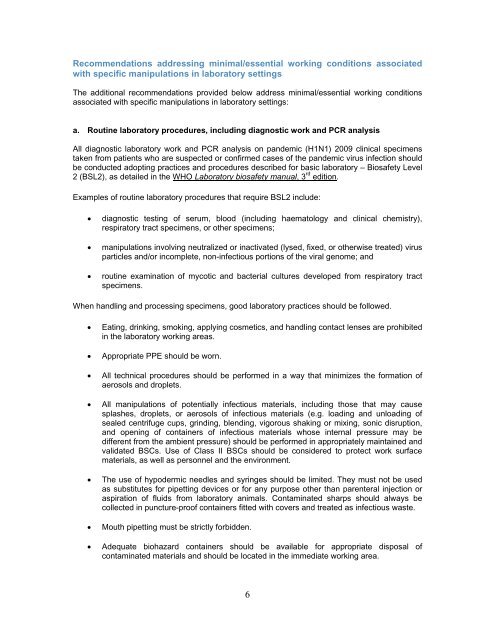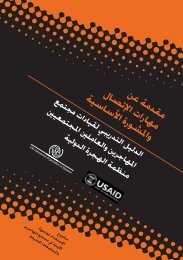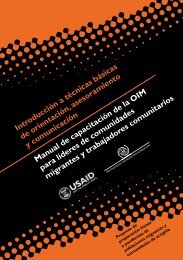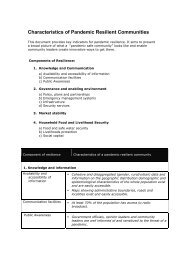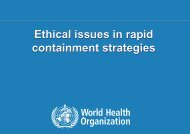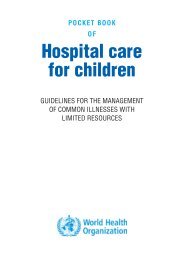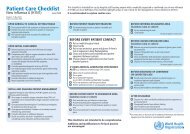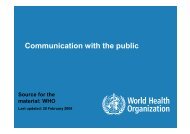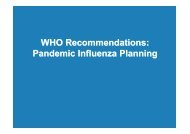1 Laboratory biorisk management for laboratories handling human ...
1 Laboratory biorisk management for laboratories handling human ...
1 Laboratory biorisk management for laboratories handling human ...
You also want an ePaper? Increase the reach of your titles
YUMPU automatically turns print PDFs into web optimized ePapers that Google loves.
Recommendations addressing minimal/essential working conditions associatedwith specific manipulations in laboratory settingsThe additional recommendations provided below address minimal/essential working conditionsassociated with specific manipulations in laboratory settings:a. Routine laboratory procedures, including diagnostic work and PCR analysisAll diagnostic laboratory work and PCR analysis on pandemic (H1N1) 2009 clinical specimenstaken from patients who are suspected or confirmed cases of the pandemic virus infection shouldbe conducted adopting practices and procedures described <strong>for</strong> basic laboratory – Biosafety Level2 (BSL2), as detailed in the WHO <strong>Laboratory</strong> biosafety manual, 3 rd edition.Examples of routine laboratory procedures that require BSL2 include:• diagnostic testing of serum, blood (including haematology and clinical chemistry),respiratory tract specimens, or other specimens;• manipulations involving neutralized or inactivated (lysed, fixed, or otherwise treated) virusparticles and/or incomplete, non-infectious portions of the viral genome; and• routine examination of mycotic and bacterial cultures developed from respiratory tractspecimens.When <strong>handling</strong> and processing specimens, good laboratory practices should be followed.• Eating, drinking, smoking, applying cosmetics, and <strong>handling</strong> contact lenses are prohibitedin the laboratory working areas.• Appropriate PPE should be worn.• All technical procedures should be per<strong>for</strong>med in a way that minimizes the <strong>for</strong>mation ofaerosols and droplets.• All manipulations of potentially infectious materials, including those that may causesplashes, droplets, or aerosols of infectious materials (e.g. loading and unloading ofsealed centrifuge cups, grinding, blending, vigorous shaking or mixing, sonic disruption,and opening of containers of infectious materials whose internal pressure may bedifferent from the ambient pressure) should be per<strong>for</strong>med in appropriately maintained andvalidated BSCs. Use of Class II BSCs should be considered to protect work surfacematerials, as well as personnel and the environment.• The use of hypodermic needles and syringes should be limited. They must not be usedas substitutes <strong>for</strong> pipetting devices or <strong>for</strong> any purpose other than parenteral injection oraspiration of fluids from laboratory animals. Contaminated sharps should always becollected in puncture-proof containers fitted with covers and treated as infectious waste.• Mouth pipetting must be strictly <strong>for</strong>bidden.• Adequate biohazard containers should be available <strong>for</strong> appropriate disposal ofcontaminated materials and should be located in the immediate working area.6


